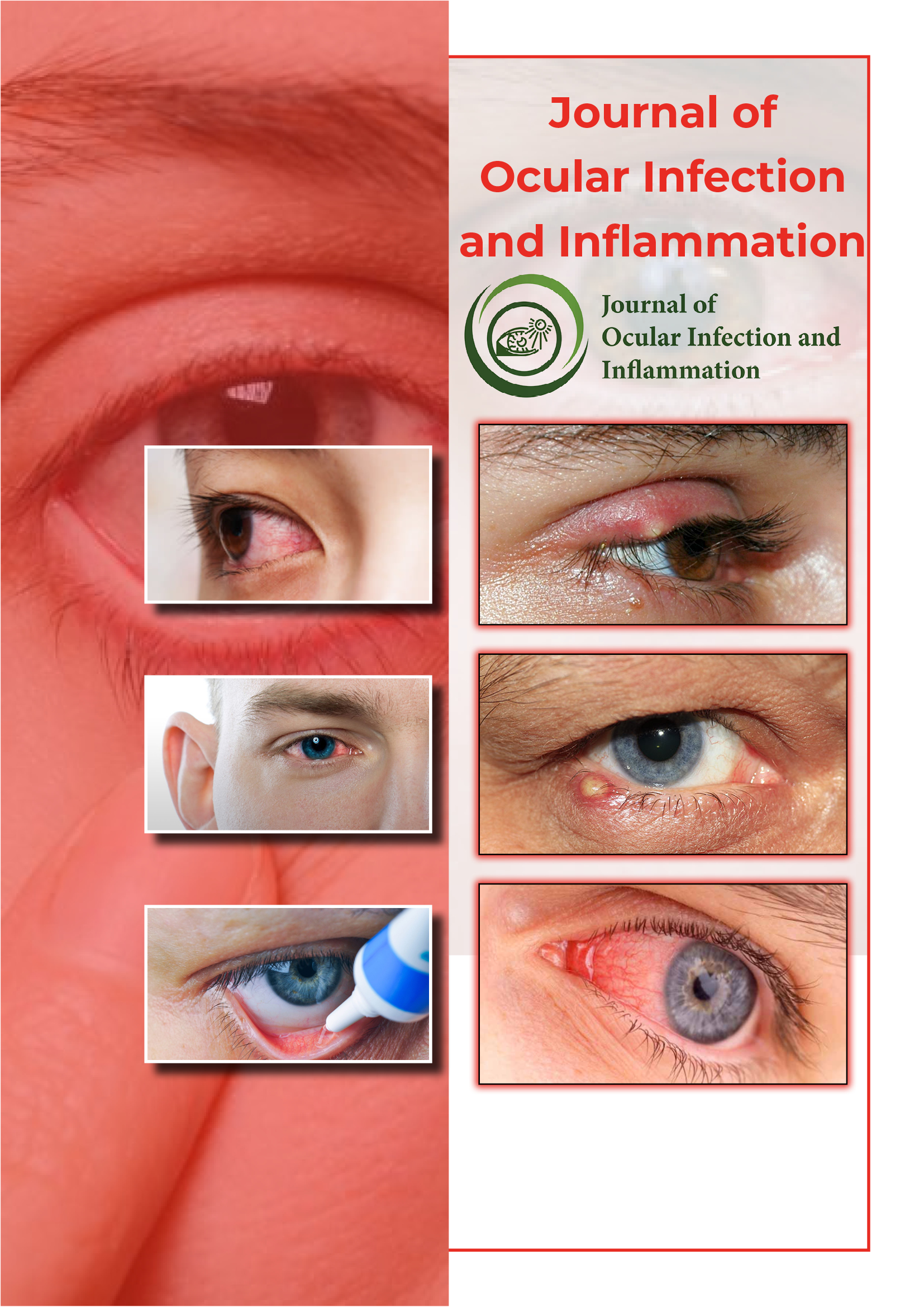Useful Links
Share This Page
Journal Flyer

Open Access Journals
- Agri and Aquaculture
- Biochemistry
- Bioinformatics & Systems Biology
- Business & Management
- Chemistry
- Clinical Sciences
- Engineering
- Food & Nutrition
- General Science
- Genetics & Molecular Biology
- Immunology & Microbiology
- Medical Sciences
- Neuroscience & Psychology
- Nursing & Health Care
- Pharmaceutical Sciences
Opinion Article - (2025) Volume 6, Issue 1
Unilateral Necrotizing Scleritis Caused by Nocardia farcinica in an Immunocompetent Host: A Rare Case Report
Ayesha Farouk*Received: 26-Feb-2025, Manuscript No. JOII-25-29322; Editor assigned: 28-Feb-2025, Pre QC No. JOII-25-29322(PQ); Reviewed: 14-Mar-2025, QC No. JOII-25-29322; Revised: 21-Mar-2025, Manuscript No. JOII-25-29322(R); Published: 28-Mar-2025, DOI: 10.35248/JOII.25.06.133
Description
Necrotizing scleritis is one of the most destructive forms of ocular inflammation, often associated with autoimmune conditions like rheumatoid arthritis or systemic vasculitis’s. However, infectious necrotizing scleritis though less common can be rapidly progressive and sight-threatening. Accurate diagnosis and appropriate management are essential, especially in cases where empirical immunosuppression could worsen an underlying infection. This case report discusses a rare instance of unilateral necrotizing scleritis caused by Nocardia farcinica in an immunocompetent patient, underlining the significance of early microbiological evaluation and targeted antimicrobial therapy.
A 48-year-old woman presented to the ophthalmology clinic with complaints of redness, intense pain blurring of vision in her left eye over the past three weeks. She had previously consulted a general physician and had been treated empirically with topical corticosteroids and broad-spectrum antibiotics, with no relief. She denied a history of systemic illness, trauma, prior ocular surgeries, or immunosuppressive drug use. Her general physical examination was unremarkable.
Ocular examination revealed severe conjunctival injection, scleral necrosis with thinning over the infer nasal quadrant, anterior chamber reaction with +2 cells and flare early signs of hypopyon. The cornea was clear there was no evidence of vitrifies. Visual acuity in the left eye was reduced to hand movements. The right eye was entirely normal. Given the worsening symptoms and the localized necrotic area, infectious scleritis was suspected. Scleral scraping was performed under aseptic conditions samples were sent for Gram staining, modified acid-fast staining, fungal culture bacterial culture.
The Gram stain revealed thin, branching filamentous organisms, while modified acid-fast staining showed weakly acid-fast structures consistent with Nocardia species. Culture grew colonies identified as Nocardia farcinica, a rare species known for its multidrug resistance and association with systemic infections. Antimicrobial sensitivity testing revealed resistance to amikacin and penicillin but susceptibility to Trimethoprim-Sulfamethoxazole (TMP-SMX) and linezolid.
Systemic workup including complete blood count, fasting blood sugar, HIV testing autoimmune markers showed no abnormalities, confirming the patient was immunocompetent. She was started on high-dose oral TMP-SMX and topical linezolid eye drops. The corticosteroids were tapered and discontinued. Within 10 days, her pain reduced significantly scleral inflammation stabilized. Follow-up at four weeks showed granulation over the previously necrotic scleral region and partial visual recovery to 6/60. At three months, there was complete healing with a residual scar and no signs of recurrence.
Infectious scleritis caused by Nocardia farcinica is exceedingly rare, with only a handful of cases reported worldwide. Misdiagnosis is common due to its resemblance to autoimmune scleritis. Empirical use of corticosteroids in such cases without microbiological evaluation can lead to rapid progression and globe perforation. The current case emphasizes the need for early suspicion of infection when necrotizing scleritis does not respond to conventional therapy.
Nocardia is a soil-borne, aerobic actinomycetes that can cause ocular infections via direct inoculation or hematogenous spread. Though typically affecting immunocompromised hosts, some strains like N. farcinica can infect healthy individuals. Given its intrinsic resistance to multiple antibiotics, prompt identification and appropriate susceptibility-guided therapy are critical.
This case contributes to the limited but growing body of literature on Nocardia-related ocular infections. It also underscores the importance of microbiological workup in all cases of necrotizing scleritis, particularly in resource-limited settings where empirical therapy is often the norm.
Ophthalmologists should maintain a high index of suspicion and coordinate closely with microbiologists to ensure timely diagnosis. The favorable outcome in this case was due to early intervention, cessation of steroids proper antimicrobial therapy.
Citation: Farouk A (2025) Unilateral Necrotizing Scleritis Caused by Nocardia farcinica in Immunocompetent Host: A Rare Case Report. J Ocul Infec Inflamm.06:133.
Copyright: © 2025 Farouk A. This is an open-access article distributed under the terms of the Creative Commons Attribution License, which permits unrestricted use, distribution and reproduction in any medium, provided the original author and source are credited.

